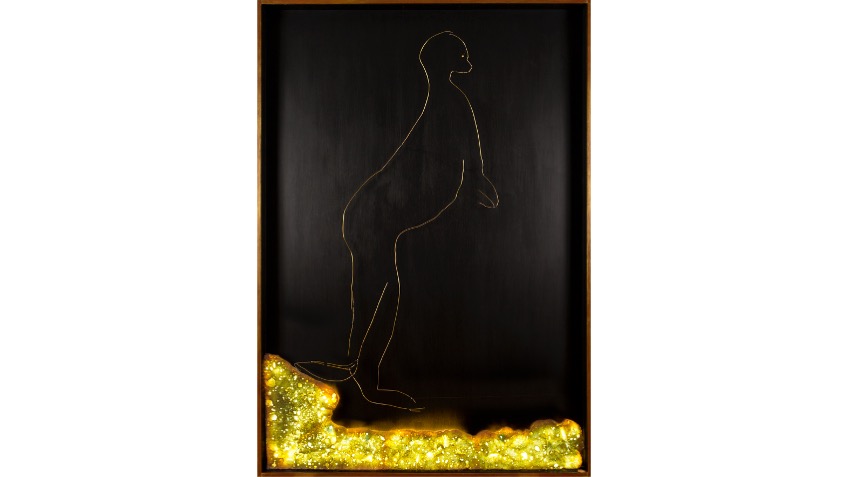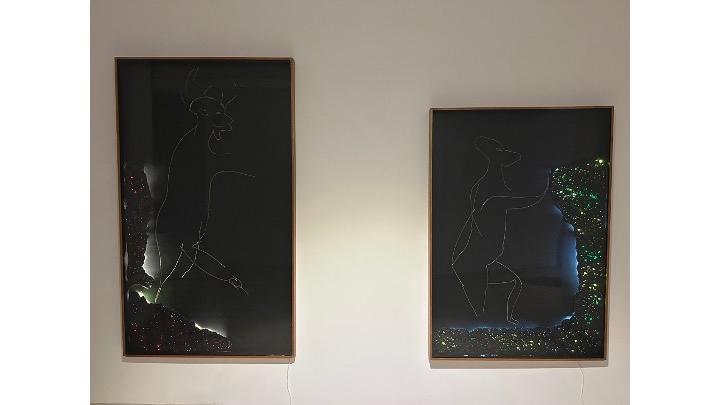Art DNA
Marcela Navascués
from January 9, 2025 to February 22, 2025
These pieces, exhibited at the Museo do Côa in Portugal and the Águilas palace in Ciudad Rodrigo, are now being presented for the first time in a gallery.
This first exhibition by Marcela Navascués at Freijo Gallery brings a selection of nine works created around the petroglyphs of the Coa Valley in Portugal, first known site of open air Palaeolithic art.
‘The recent works of Marcela de Navascués... adopt and claim a direct connection with Côa Art in its purest form... While trying to be faithful to the original models, and with particular focus on the unique Palaeolithic anthropomorphism, Marcela turns prehistoric models into the heart of her creations’.
António Martinho Baptista
Director of the Côa Valley Archaeological Park
Marcela ‘painstakingly produced a series of paintings in which she transported the Palaeolithic art of the Côa Valley, created many millennia ago, into today's art. From the rocks of the Côa Valley, the ‘Duccio's rock’ of the Palaeolithic artists, she created a collection of twenty works ... The black background paintings connect us with a cosmic universality. With foams, the figures acquire modernity, and their present-day context links them to the earth, to the carved rocks.'
Joao Nicolau De Almeida
The prehistoric rock art sites of the Côa Valley were inscribed on the UNESCO World Heritage List in 1998, a declaration that was extended in 2010 to include the Palaeolithic rock art of Siega Verde, as an exceptional example of the earliest examples of symbolic creation and the beginning of human cultural development.
These rock art sites are located along the Douro River on both sides of the Portuguese-Spanish border. The prehistoric rock art sites of the Côa Valley possess an extraordinary concentration of Upper Palaeolithic petroglyphs that is unique in the world and constitutes one of the most remarkable examples of early human artistic creations.
They consist mainly of animal representations, such as horses, bovids and caprids. Human figures and signs are also present. The cave paintings at both sites include representations of animal species characteristic of the fauna of this period (equids, aurochs, bison, deer, reindeer, megaceros and caprids) as well as anthropomorphic and abstract representations of great iconographic value. The figures were made using techniques close to chiseling, by delimiting the outline of the figure with dots, orby incisions or drawing through a fine line engraved on the rock. The stylistic, technical and thematic features allow us to place these figures in the Upper Palaeolithic, within a chronological range between 20,000 and 11,000 BC, the time of development of the Solutrian and Magdalenian cultures.
Source: Ministry of Culture, Spanish Government
Marcela Navascués and the art of light at the Côa Museum - António Martinho Baptista
















